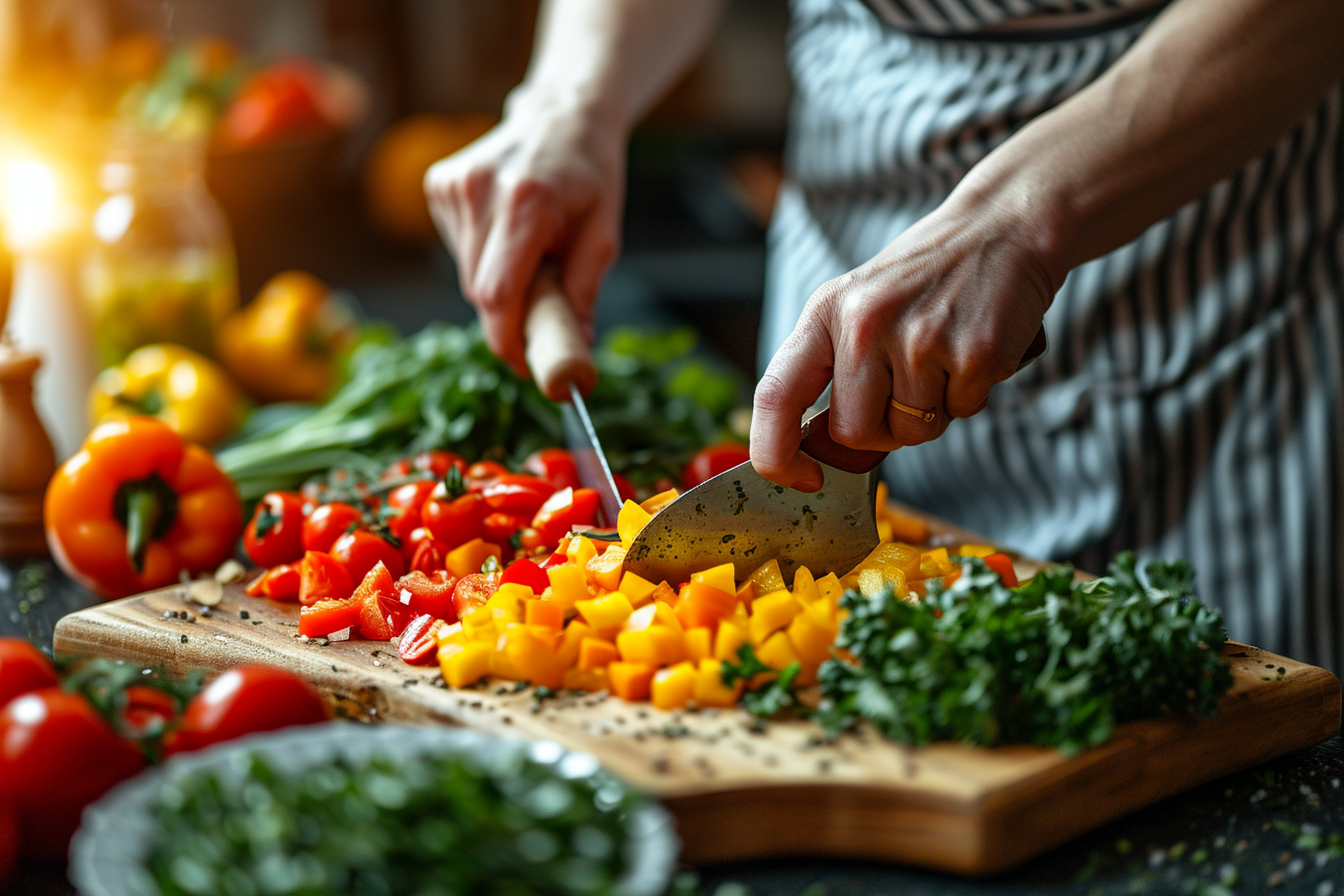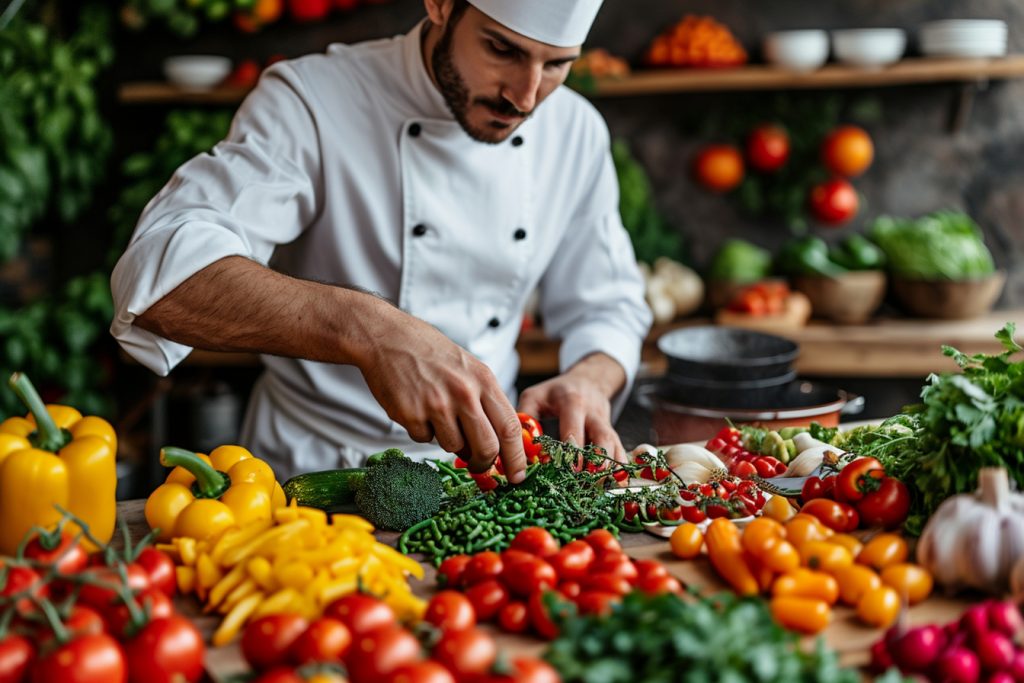
The significance of vegetable-based vegan cuisine
The landscape of culinary arts has been experiencing a verdant revolution, with plant-based vegan cooking taking center stage. As a testament to the versatility and richness of vegetables, this style of cuisine has captured the imaginations of chefs and home cooks alike. Vegetable-based vegan cooking not only champions the cause of ethical eating and sustainability but also showcases a cornucopia of flavors, textures, and nutrients that can be unlocked through mastery of various techniques.
Embracing the diversity of vegetables
Vegetables: the backbone of vegan cuisine, deserve a deep understanding. Their variety in color, flavor, and texture offers endless possibilities for creativity in the kitchen. Beyond mere sustenance, each vegetable holds a unique profile that can be harnessed through appropriate cooking methods. The exploration of exotic and heirloom varieties can further enrich one’s culinary repertoire, offering a broader canvas upon which to combine and contrast tastes and textures.
Essential techniques for preparing vegetables
Selecting and Storing: Proper selection and storage of vegetables are foundational steps that cannot be overlooked. Opt for fresh, locally sourced produce when possible, assessing the quality through visual inspection for vibrant colors and a firm texture. Equally important is the art of storing vegetables to maximize freshness and nutritional value; each vegetable requires specific conditions, whether it’s root vegetables in a cool, dark place or leafy greens in the crisper drawer of a refrigerator.
Cutting and Prepping: Mastery of knife skills is paramount in vegetable preparation. Different cuts—such as julienne, brunoise, or chiffonade—contribute not only to the aesthetics of a dish but also to the texture and cooking time. Each dish may warrant a specific type of cut to ensure that all components cook evenly and present elegantly on the plate.
Cooking Techniques:
-
Blanching: This quick cooking technique involves submerging vegetables in boiling water for a brief period before transferring them to an ice bath. Blanching preserves the vibrant color and texture of vegetables, making it an ideal preparation for salads and side dishes.
-
Roasting: To deepen flavors and add a delightful caramelized exterior, roasting is an unparalleled method. By cooking vegetables in an oven at high temperatures, natural sugars are brought to the surface, creating complexity and richness in taste.
-
Steaming: For those seeking to retain the maximum nutritional value, steaming is the technique of choice. This gentle cooking method allows vegetables to cook in their own vapors, maintaining their integrity and healthful properties.
-
Sautéing: A faster technique that imbues vegetables with flavors from herbs, spices, and oils, sautéing is excellent for achieving a balance of tenderness and sear without losing the inherent qualities of the produce.
-
Grilling: Though less conventional in vegan cuisine, grilling vegetables opens up a smoky dimension of taste. It’s an ideal summer technique that lends a rustic and hearty appeal to dishes.
Flavor amplification in vegetable-based vegan dishes
Understanding how to coax out and accentuate natural flavors can make vegetable-based dishes not just palatable, but utterly irresistible. Employing a balance of herbs, spices, and umami-rich components such as nutritional yeast, soy sauce, or miso can elevate the simplest of vegetables to gourmet fare. Cultivating a knowledge of flavor pairings is equally essential; the correct combination of contrasting or complementary flavors can transform a dish from mundane to memorable.
The role of fats and acids in vegan cooking
Using fats judiciously, whether it’s a high-quality olive oil, coconut oil, or vegan butter, is key in achieving satisfying textures and layers of flavor. The introduction of acids like vinegars or citrus can brighten dishes, imparting a necessary balance against the richness of fats. Mastery of the interplay between fats and acids can quite literally be the difference between a good dish and a great one.
Textural contrast and visual appeal
Texture plays a pivotal role in the enjoyment of food. Creating varied mouthfeels with techniques such as pureeing for smoothness, adding nuts for crunch, or incorporating grains for chewiness can make a vegetable-centric dish more engaging. The visual arrangement on the plate is not merely an aesthetic consideration but entices the palate and prepares the diner for the gustatory experience.
Nutritional considerations in vegan cuisine
While flavor and presentation remain prominent aspects, nutrition in vegan cuisine must never be an afterthought. A deep dive into the nutritional profiles of various vegetables is essential for ensuring a well-rounded meal. Packed with vitamins, minerals, and fiber, vegetables can form the basis of a balanced diet when prepared thoughtfully. The inclusion of legumes, nuts, seeds, and whole grains complement the nutritional palette, providing necessary proteins, healthy fats, and complex carbohydrates.
Innovation and experimentation with plant-based ingredients
Experimentation is the bedrock of culinary evolution. Replacing traditional ingredients with plant-based alternatives, such as cashew cream for dairy or flaxseeds for eggs, calls for a spirit of innovation and a willingness to adapt classic techniques. Modern gastronomy has also introduced novel ingredients like aquafaba and various meat substitutes, opening up new horizons for those who embrace a vegan lifestyle.
Sustainability and ethical considerations
In the broader scheme, embracing vegetable-based vegan cooking is a gesture of commitment towards sustainable living and ethical consumption. The choice to focus on plants significantly reduces the environmental impact of food production, echoing a respect for the planet and its resources. Empowering others to adopt a vegan approach through sharing skills and wisdom fosters a community of conscious individuals contributing to positive change.
Continuous learning and mastery
The journey to mastering techniques de cuisine végétalienne à base de légumes is one punctuated by continuous learning and adaptation. Building a strong foundation in classical methods while staying abreast of modern trends sharpens one’s culinary instincts. Connecting with fellow culinary enthusiasts, whether through workshops, online forums, or local events, nurtures a dynamic and supportive environment for growth.
The transformative power of plant-based culinary artistry
Renowned chefs and home cooks alike are heralding the dawn of a new era in gastronomy where plants are not just an accompaniment but the star of the plate. The artistry involved in vegan cooking, rooted in the respectful treatment and preparation of vegetables, unveils new flavors, textures, and experiences. It’s an invitation to a healthier, more earth-conscious way of living, a celebration of nature’s bountiful provision, an odyssey that continues to inspire and excite those who embark on it.
As we continue to explore the vast repertoire of techniques and approaches to plant-based cooking, it is clear that the ingenuity within veggie cuisine knows no bounds. Sharing knowledge and discoveries only enriches the collective trove of culinary treasures, inviting others to partake in the journey of redefining what it means to cook with and enjoy vegetables. Whether a seasoned chef or an aspiring home cook, each step taken toward refining one’s technique and understanding of this art form is a stride towards a more flavorful and sustainable future.








